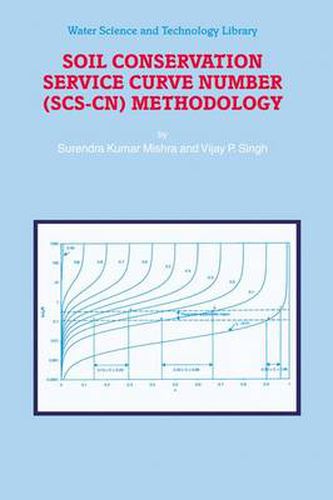Readings Newsletter
Become a Readings Member to make your shopping experience even easier.
Sign in or sign up for free!
You’re not far away from qualifying for FREE standard shipping within Australia
You’ve qualified for FREE standard shipping within Australia
The cart is loading…






This title is printed to order. This book may have been self-published. If so, we cannot guarantee the quality of the content. In the main most books will have gone through the editing process however some may not. We therefore suggest that you be aware of this before ordering this book. If in doubt check either the author or publisher’s details as we are unable to accept any returns unless they are faulty. Please contact us if you have any questions.
Understanding of the SCS-CN method and consequently its application potential has increased. In the simplest form, the fundamental proportionality concept of the method relates the two orthogonal hydrological processes of surface water and ground water and the other hypothesis relates to the atmospheric process. Qualitatively, the method broadly integrates all the three major processes of the hydrologic cycle; and therefore it can form one of the fundamental concepts of hydrology. This textbook is aimed at presenting an account of the SCS-CN method and clarify its potential for practical applications, and especially those other than originally intended. The subject matter of the book is divided into nine chapters, treating the following topics: a brief introduction of rainfall-runoff modelling and elements of catchment, precipitation, interception, surface detention and depression storage, evaporation, infiltration, runoff and the runoff hydrograph; the factors affecting the curve number (CN), the determination of CN, the use of NEH-4 tables, sensitivity analysis, advantages and limitations of the SCS-CN method and application to distributed watershed modelling; an analytical derivation of the SCS-CN method focusing on the Mockus and other methods; a determination of S using the volumetric concept encompassing an analytical derivation, verification of the existing AMC criteria, determination of S, use of NEH-4 tables and advantages and limitations of the modified model; the determination of S using physical principles, involving Fokker-Planck equation of infiltration, description of S, S/P relations for the modified model and determination of Ds from universal soil loss equation. The book also covers: simulation of infiltration and runoff hydrographs, with particular emphasis on SCS-CN-based infiltration and runoff models and application of infiltration and runoff models; long-term hydrologic simulation and hydrologic models of Williams and LaSeur, Hawkins, Pandit and Gopalkrishnan, and Mishra and others; rainfall-excess computation, soil moisture budgeting, catchment routing, and baseflow computation; transport of pollutants in urban waters; and sediment yield.
$9.00 standard shipping within Australia
FREE standard shipping within Australia for orders over $100.00
Express & International shipping calculated at checkout
This title is printed to order. This book may have been self-published. If so, we cannot guarantee the quality of the content. In the main most books will have gone through the editing process however some may not. We therefore suggest that you be aware of this before ordering this book. If in doubt check either the author or publisher’s details as we are unable to accept any returns unless they are faulty. Please contact us if you have any questions.
Understanding of the SCS-CN method and consequently its application potential has increased. In the simplest form, the fundamental proportionality concept of the method relates the two orthogonal hydrological processes of surface water and ground water and the other hypothesis relates to the atmospheric process. Qualitatively, the method broadly integrates all the three major processes of the hydrologic cycle; and therefore it can form one of the fundamental concepts of hydrology. This textbook is aimed at presenting an account of the SCS-CN method and clarify its potential for practical applications, and especially those other than originally intended. The subject matter of the book is divided into nine chapters, treating the following topics: a brief introduction of rainfall-runoff modelling and elements of catchment, precipitation, interception, surface detention and depression storage, evaporation, infiltration, runoff and the runoff hydrograph; the factors affecting the curve number (CN), the determination of CN, the use of NEH-4 tables, sensitivity analysis, advantages and limitations of the SCS-CN method and application to distributed watershed modelling; an analytical derivation of the SCS-CN method focusing on the Mockus and other methods; a determination of S using the volumetric concept encompassing an analytical derivation, verification of the existing AMC criteria, determination of S, use of NEH-4 tables and advantages and limitations of the modified model; the determination of S using physical principles, involving Fokker-Planck equation of infiltration, description of S, S/P relations for the modified model and determination of Ds from universal soil loss equation. The book also covers: simulation of infiltration and runoff hydrographs, with particular emphasis on SCS-CN-based infiltration and runoff models and application of infiltration and runoff models; long-term hydrologic simulation and hydrologic models of Williams and LaSeur, Hawkins, Pandit and Gopalkrishnan, and Mishra and others; rainfall-excess computation, soil moisture budgeting, catchment routing, and baseflow computation; transport of pollutants in urban waters; and sediment yield.